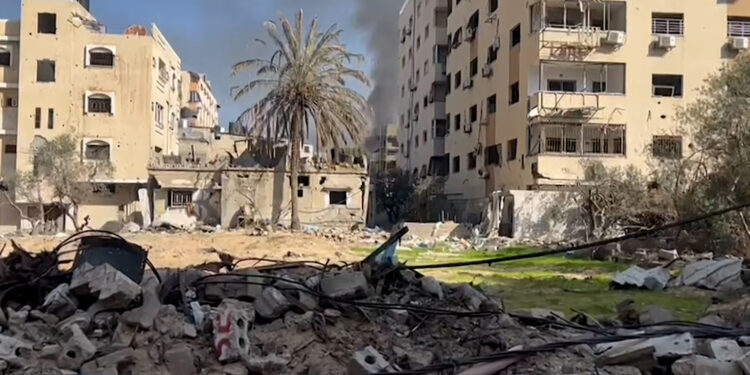UN and international bodies have warned of an imminent humanitarian catastrophe in the Gaza Strip, whose population exceeds two million people, and who currently depend on foreign aid as their main source of livelihood.
The United Nations World Food Program said that the Gaza Strip is on the verge of a near humanitarian catastrophe, stressing that the resumption of fighting in Gaza will intensify the catastrophic hunger crisis that is already burdening civilians.
The UN program stated in the statement that the humanitarian truce – which lasted 7 days and ended in early December – provided them and their partners with a fairly safe environment to expand the scope of relief operations.
He pointed out that the program reached about 250,000 people in just one week, and that the renewed fighting made the distribution of aid largely impossible.
Medical materials at low levels
In turn, Doctors Without Borders warned that medical supplies and fuel had reached very low levels in Al-Aqsa Martyrs Hospital due to the closure of roads.
The organization’s emergency coordinator in the Gaza Strip, Mary Or Perro-Reveal, said that there are currently 700 patients and wounded in the hospital, which has received between 150 and 200 war wounded every day since the first of December, in light of the shortage of basic materials for their treatment.
Revial warned that the shortage of medicines and fuel would cause the hospital to stop providing life-saving operations or intensive care services.
She stressed that it is important to facilitate the arrival of humanitarian supplies to the hospital, and called for lifting the siege on Gaza and urgently providing humanitarian medical supplies and aid to the entire Strip.
War creates horrific conditions
In this context, United Nations Emergency Relief Coordinator Martin Griffiths said – to the British newspaper The Guardian – that the Israeli military campaign in southern Gaza is as destructive as it was in the north, stressing that it left “horrific” conditions and ended any possibility of carrying out meaningful humanitarian operations, as he put it. .
Griffiths added that the ongoing attack has deprived relief workers of any important means to help the people of Gaza, and that American diplomatic efforts have failed to influence the Israeli forces, he said.
For its part, the US State Department considered – today, Wednesday – that what Israel has done so far to bring humanitarian aid into Gaza is not sufficient.
State Department spokesman Matthew Miller said in the daily press conference that Gaza, which is under siege and Israeli attacks, has not had sufficient fuel, food and water enter it.
He added, “What has been taken so far is insufficient. The steps must be accelerated, and this is what we clearly told the Israeli government.”
Limited distribution of aid
For his part, Stephane Dujarric, spokesman for the Secretary-General of the United Nations, said that his organization was able the day before yesterday to enter more than 100 trucks loaded with aid and 960,000 liters of fuel into Gaza.
Dujarric said that Rafah was the only governorate in Gaza where limited aid was distributed.
In Gaza, the Director-General of the Ministry of Health in the Strip said that more than 100 bodies were inside Kamal Adwan Hospital, “and the occupation does not allow us to bury them.” He added that the entire north of Gaza has become without health services.
For his part, the director of the Gaza European Hospital in Khan Yunis said that large numbers of injured people arrived at the hospital due to the Israeli bombing.
Since last October 7, the Israeli army has launched a massive aggression against the Gaza Strip, which as of yesterday evening, Tuesday, left 16,248 martyrs, including 7,112 children and 4,885 women, in addition to 43,616 wounded, in addition to massive destruction of infrastructure and an unprecedented humanitarian disaster. According to official Palestinian and UN sources.



